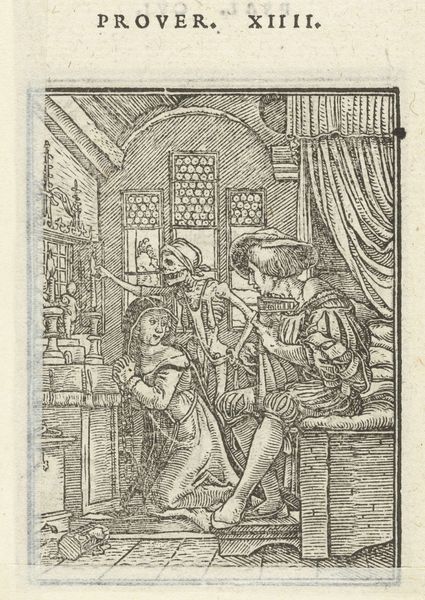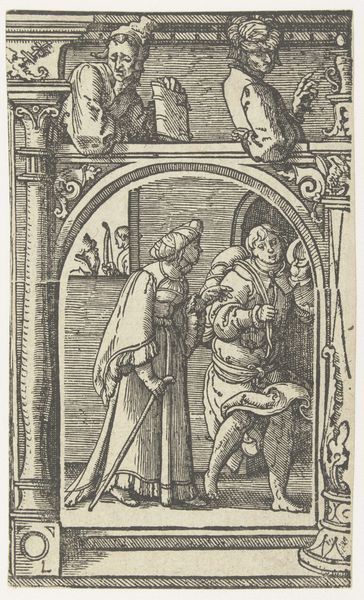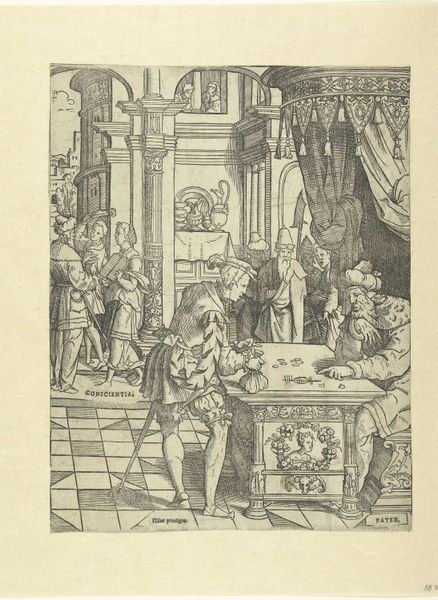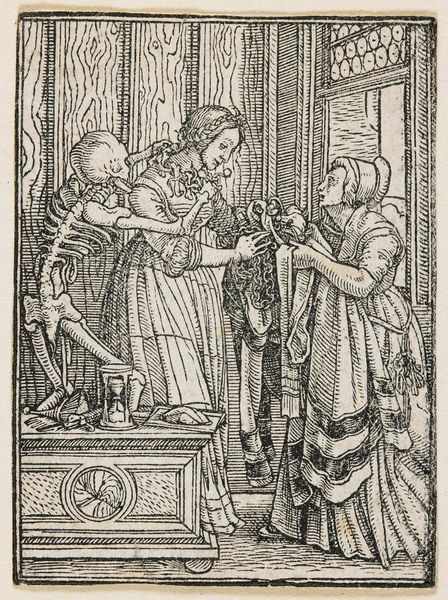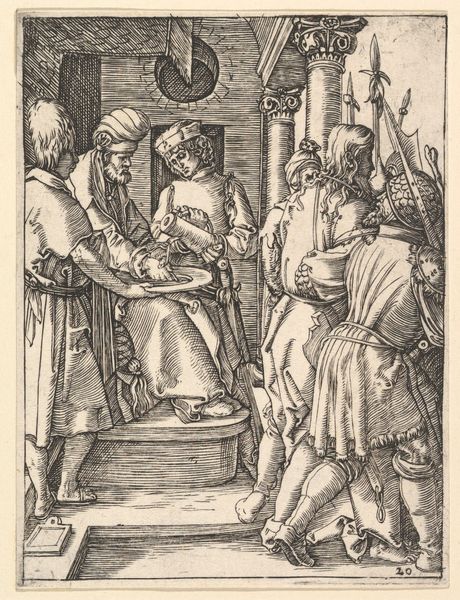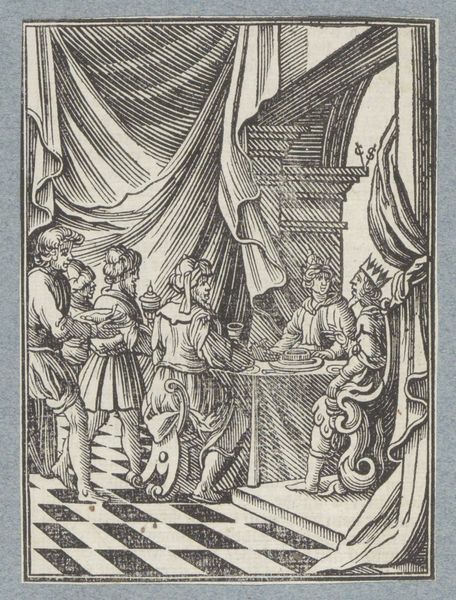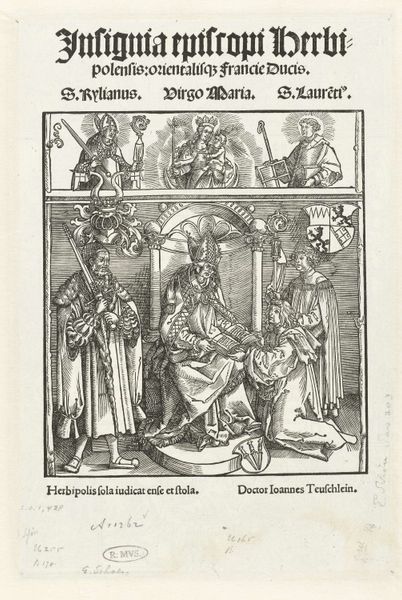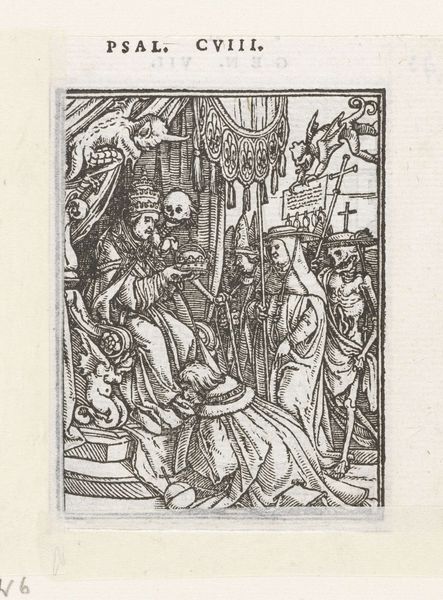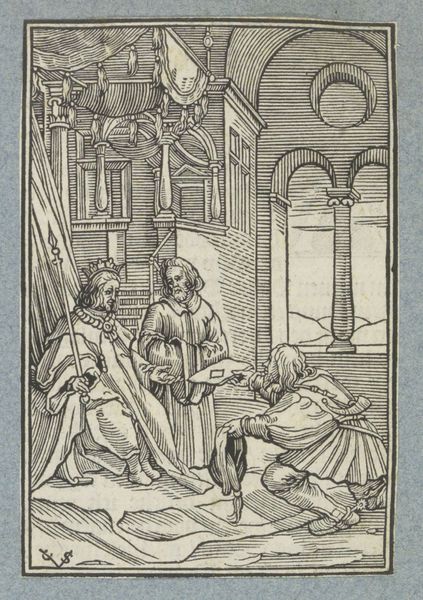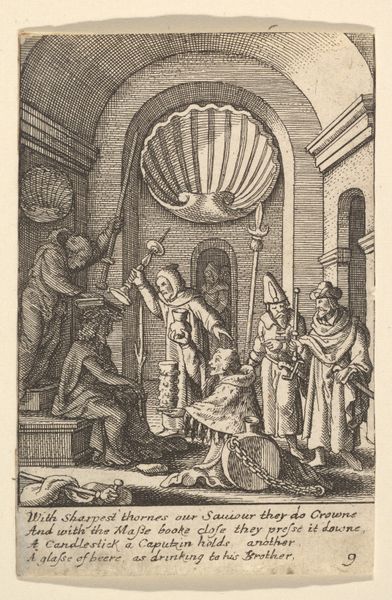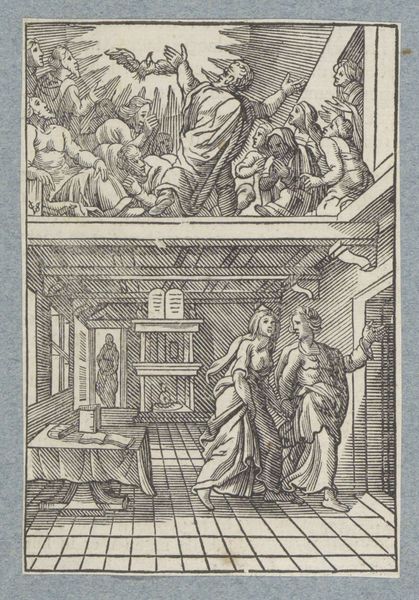
print, woodcut
#
allegory
# print
#
old engraving style
#
figuration
#
personal sketchbook
#
momento-mori
#
woodcut
#
line
#
genre-painting
#
history-painting
#
northern-renaissance
Dimensions: height 65 mm, width 50 mm
Copyright: Rijks Museum: Open Domain
Hans Holbein the Younger created this woodcut, "Countess and Death," sometime in the 16th century. The stark contrast of black ink on paper immediately draws you into its intricate detail. The composition is structured around the interplay of lines and textures. Notice how Holbein uses dense, parallel lines to create depth and shadow, particularly in the Countess's elaborate gown and the skeletal figure of Death, who embraces her. The sharp, angular lines of the skeleton contrast with the softer, flowing lines of the Countess's attire, highlighting the tension between mortality and earthly vanity. The hourglass on the table serves as a semiotic marker, a symbol of fleeting time. The gaze of the Countess directs you to the servant, acting as a mirror reflecting the Countess's life of privilege. This work engages with the philosophical discourse of the era, which is questioning life and death, fate, and the futility of worldly possessions in the face of death. The masterful use of line and form serves not only an aesthetic purpose but also enhances the woodcut's function as a profound meditation on human existence.
Comments
No comments
Be the first to comment and join the conversation on the ultimate creative platform.
